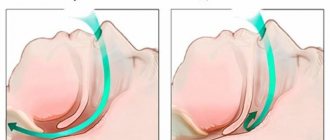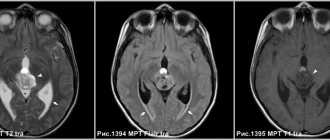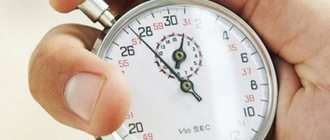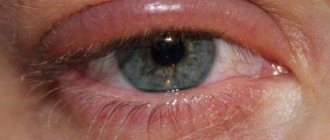A separate disease called “ lack of air”
" does not exist. A feeling of shortness of breath is a symptom, a sign of a painful condition.
As stated above, there are two groups of reasons for this symptom:
1. Internal diseases: pathology of the heart, lungs, blood diseases, obesity, oncology, infections, injuries, etc.
2. Nervous and mental disorders:
- consequences of stress,
- prolonged or intense overload,
- neuroses,
- neurasthenia,
- panic attacks and other anxiety disorders,
- depression,
- consequences of organic damage to the nervous system,
- psychosomatic and somatoform diseases.
Statistics say that the vast majority of cases of feeling short of air when inhaling is a consequence of disturbances in the functioning of the nervous system.
The mechanism for triggering this symptom is associated with the development of anxiety, overexcitation of the midline structures of the brain, excessive activation of autonomic centers, and the predominance of excitation processes over inhibition processes in neurons.
The feeling of shortness of breath may be accompanied by other symptoms:
- feeling of heartbeat,
- dry mouth or excessive sweating,
- feeling of heaviness in the chest or stomach,
- discomfort in the head and neck,
- internal trembling
- insomnia,
- loss of appetite,
- gastrointestinal disorders (diarrhea, constipation),
- fear of death.
Previously, doctors called such conditions VSD (vegetative-vascular dystonia), but in our time this term has ceased to be used.
Types of shortness of breath
During significant physical exertion, the body does not have enough oxygen, so usually in such cases the breathing rate increases. This is the so-called physiological shortness of breath
. However, if shortness of breath occurs with light exertion or at rest (for example, in a lying position), then its nature is pathological.
It is of great importance which stage of breathing causes difficulty - inhalation or exhalation. Shortness of breath that occurs during inspiration is called inspiratory dyspnea
, on exhalation -
expiratory shortness of breath
. Mixed shortness of breath is also common, in which both inhalation and exhalation are difficult.
What is shortness of breath in humans: symptoms
The occurrence of shortness of breath in the initial stages of damage to the cardiovascular and respiratory systems is associated with physical exertion (for example, when the patient climbs up the stairs). As the pathology progresses, shortness of breath and fatigue appear even with a slight load (walking on a flat surface, tying shoelaces, etc.), as well as at rest.
Patients perceive shortness of breath quite subjectively. It may be accompanied by the following symptoms:
- difficulty breathing (inhalation/exhalation);
- compression in the chest;
- feeling of congestion in the chest area;
- tightness in the chest;
- feeling of lack of air;
- inability to take a deep breath or exhale completely;
- suffocation.
Causes of shortness of breath
Shortness of breath is caused by various reasons. The most common causes of shortness of breath are:
- diseases of the cardiovascular system
. Cardiovascular pathologies lead to insufficient blood circulation. The organs do not receive the required amount of oxygen, and carbon dioxide accumulates in the blood. The body reacts to this condition by breathing faster - more air is pumped through the lungs per unit of time. Shortness of breath due to cardiac pathology occurs or worsens after physical exertion or while lying down. In a sitting or semi-sitting position, shortness of breath goes away. This type of shortness of breath is characterized by difficulty breathing; - pathologies of the respiratory system
. Shortness of breath may be caused by obstructions to the passage of air through the respiratory tract, for example, by narrowing of the lumens of the bronchi. Therefore, shortness of breath is a typical symptom of bronchial asthma. In this case, exhalation is difficult. Shortness of breath can also be caused by a decrease in the respiratory surface of the lung tissue. As a result of such a decrease, in order to maintain the required amount of oxygen entering the blood, more intensive work of the lungs is required, that is, more frequent inhalation. The list of diseases of the respiratory system in which shortness of breath may occur is extensive and includes such dangerous pathologies as tumors, pneumonia, chronic obstructive pulmonary diseases and others; - anemia
. A lack of red blood cells (erythrocytes) and hemoglobin leads to the fact that even with normal functioning of the heart and lungs, the blood is not able to provide the organs with the necessary amount of oxygen, and the body tries to compensate for this by increasing the breathing rate; - neuroses and panic attacks
. In this case, a clinical examination does not reveal pathologies of the heart and lungs, but subjectively the patient experiences a lack of air, and psycho-emotional changes lead to increased breathing. - Obesity and diabetes also often lead to shortness of breath.
Carrying out diagnostics
To find out why breathing is difficult and to select effective methods for normalizing it, a thorough diagnosis is carried out. To clarify the causes of shortness of breath, the KRH Dental & Medica clinic performs:
- examination of the larynx using direct and indirect laryngoscopy;
- chest x-ray, fluoroscopy, bronchoscopy;
- spirometry, which allows you to assess the state of respiratory function;
- electrocardiography, daily Holter monitoring, determining the characteristics of the heart.
It is also provided for a test to determine the gas composition of the blood. To find out the reason why breathing is difficult, an MRI, tests for allergic reactions, and testing for tumor markers may be required.
Treatment of shortness of breath
Shortness of breath is not an independent disease, but a symptom indicating a malfunction of certain organs. To make it easier to diagnose the disease, before visiting a doctor, try to answer the following questions:
- When did you notice that shortness of breath appeared?
- Does shortness of breath always occur after physical exertion, or does it bother you even at rest?
- What is more difficult - inhaling or exhaling?
- In what position does it become easier to breathe?
- What other symptoms bother you? This may include chest pain, swelling, weakness, dizziness, cough, and fever.
Other diseases affecting breathing
Shortness of breath can occur as a result of any violation of the integrity of the chest, which occurs, in particular, as a result of injury. Very often, patients experience difficulty breathing after a rib fracture. The pain that occurs as a result of the injury does not allow a person to breathe fully, causing him to feel short of air. Shortness of breath can also occur due to contact with allergens, or when a person has a disease such as diabetes.
Even if a person knows about his illness, if shortness of breath occurs, he needs to consult a doctor who will conduct a full examination and draw up a series of procedures to alleviate the patient’s condition.
What to do if it becomes difficult to breathe
What is the treatment for sleep disordered breathing?
CPAP therapy appeared in 1981
.
This small device was created specifically for the treatment of sleep apnea by Australian professor of medicine Collin Sullivan. CPAP therapy is artificial ventilation of the lungs, which occurs through a small compressor. A tube with a mask is attached to the compressor. Coming out onto the tube and then onto the mask (which is attached to the patient's face), a constant stream of air flows directly into the respiratory tract
. CPAP machine therapy is used by doctors and patients to treat sleep apnea, snoring, respiratory failure, insomnia, depression and other sleep problems.
It is worth noting that CPAP therapy can only be prescribed by a doctor, after diagnosing sleep - polysomnography.
Treatment of apnea and snoring with CPAP therapy can last a year, in some cases a lifetime.
Patients get rid of bad sleep once and for all, they begin to lose weight, their blood pressure returns to normal, the problem of snoring “dissolves”, healthy sleep takes pride of place in a person’s bedroom! Having slept well once, as a rule, patients never part with their CPAP machine! Moreover, modern CPAP machines weigh no more than 2-3 kg and can be used not only at home and away, but also on business trips, on vacation, in the car and even on an airplane!
Treatment and diagnosis of dyspnea in Kaliningrad
If you are concerned about shortness of breath and are looking for a qualified pulmonologist in Kaliningrad, make an appointment at our pulmonology center. For you:
- only competent, caring specialists;
- a full range of procedures for diagnosing lung diseases;
- comprehensive care for pathologies of the respiratory system: treatment of COPD, treatment of asthma;
- rehabilitation after coronavirus infection;
- comfortable living conditions.
You can make an appointment at our pulmonology center by calling 8 (4012) 971-961.
What is polysomnography?
This is diagnostic equipment designed to give a complete description of sleep
and all functions of the human body during sleep, determine the nature of the sleep disorder.
Sleep diagnostics today is the only chance to make an accurate diagnosis
and “not to miss” in the unequal struggle of doctors with breathing disorders during sleep.
Poly
- from lat.
a lot
,
dubiously
-
sleep
,
graphy
-
writing
. Diagnosis of sleep using polysomnography is the diagnosis of breathing disorders during sleep.
Polysomnography involves studying the basic functions of the body during sleep under normal human conditions. In a simulated bedroom, breathing function, heart function, brain function, blood oxygen saturation level, motor activity of the chest and abdomen, the nature of snoring and much more are monitored. Based on the results of polysomnography, the doctor gives the patient a diagnosis over the next day. After this, the patient is offered treatment. CPAP therapy
(CPAP therapy)
is recognized throughout the world as the gold standard for the treatment of apnea .
What happens in this case?
Since central sleep apnea
is a consequence of a disorder of the central nervous system and differs from obstructive apnea in that it is dependent on a neurological plan, and not a physiological one, this means that breathing disorder during sleep occurs from the brain.
Sleep and breathing disorders occur in the part of the brain that controls breathing. With central sleep apnea, the airways are completely free for air to enter. Central sleep apnea syndrome
It is much less common, but doctors who deal with sleep problems should certainly know the nature of your “bad sleep.”
For this purpose, several years ago, a unique diagnostic device was introduced into the circulation of somnologists - polysomnography
.
Lack of air with VSD
One of the common manifestations of VSD is a feeling of lack of air or hyperventilation of the lungs. At the same time, you may feel a “lump in your throat,” increased breathing, and you experience a feeling of lack of oxygen. It is actually a condition in which there is not enough carbon dioxide in the blood. The body begins to give a command to slow down your breathing, and if you are prone to anxiety, you instinctively begin to breathe more often.
Along with the lack of air, accompanying symptoms may appear - rapid heartbeat, ringing in the ears, tingling in the limbs.
Attacks are especially active during stressful conditions.
Why us
- Doctors. We receive specialists of the highest qualification category, holders of academic degrees, with extensive experience in leading Russian clinics.
- Individual approach. The doctor will develop an individual examination and treatment plan for each patient in accordance with the cause of development and clinical picture of the disease.
- Complexity. The therapists at our clinic work in close collaboration with other specialists - cardiologists, hematologists, psychotherapists. This provides effective treatment for shortness of breath of various origins.
- Expert equipment. All studies are carried out using modern equipment and are highly accurate.
- Comfort. All consultations, studies and treatment are carried out within our hospital, which allows our patients to save energy and time.
You can see prices for services
How to eliminate shortness of breath at home
You can get rid of heaviness and shortness of breath and alleviate the patient’s condition in different ways.
Additional home treatment methods can only be used in consultation with your doctor!
These treatment methods include the following:
- foot baths;
- inhalation;
- exercises that help normalize respiratory function.
The easiest way to eliminate shortness of breath is to run and warm up. After consultation with doctors, you can do weight lifting exercises.











